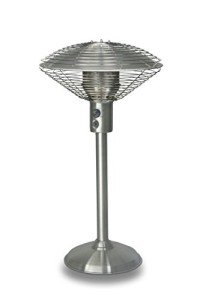The 10 Scariest Things About Gas Patio Heaters
Gas Patio Heaters in the UK: A Comprehensive Guide
As the seasons modification and temperatures drop, outdoor living areas can become less comfortable. Nevertheless, the ideal heating service can transform a cold garden or patio into an inviting and cozy environment. Among the different options offered, gas patio heaters have acquired appeal in the UK. This guide intends to supply readers with an in-depth take a look at gas patio heaters, their advantages, types, maintenance, and considerations for selecting the ideal one for your outdoor space.
What is a Gas Patio Heater?
A gas patio heater is an outdoor heating home appliance that uses gas (butane or propane) as its fuel source. Designed to warm outdoor areas, these heaters can be tactically placed to provide heat for events, barbecues, or merely lounging outside even during cooler nights. Gas patio heaters can be found in numerous styles and capacities, making them appropriate for a wide variety of outdoor areas.
Advantages of Gas Patio Heaters
Gas patio heaters offer numerous advantages over other heating options, making them a popular choice for UK house owners. A few of the essential advantages include:
- Quick Heating: Gas patio heaters provide immediate heat, permitting users to enjoy their outdoor areas without waiting on the heater to heat up.
- Energy Efficiency: Compared to electric heaters, gas patio heaters typically consume less energy, which can cause lower fuel expenses, particularly in larger locations.
- Movement: Many gas patio heaters are designed with wheels, making them easy to move around the garden or patio.
- Climatic Ambience: Gas heaters supply a warm glow that improves the outdoor environment, making gatherings more inviting.
Kinds Of Gas Patio Heaters
When thinking about a gas patio heater, it's important to comprehend the different types available on the marketplace. Below are the main ranges:
Standing Heaters: These are the most common type, featuring a high pole that supports the heating component. They can effectively warm bigger locations and often featured a variety of heat output settings.
Tabletop Heaters: Smaller and often more portable, tabletop heaters can be put on outdoor tables and are ideal for intimate events.
Wall-mounted Heaters: These systems are fixed to a wall and provide an irreversible heating option for patios with limited space.
Fire Pit Heaters: Combining heat with a central ornamental component, fire pits can develop a centerpiece for outdoor areas while providing heat.
Contrast Table of Gas Patio Heater Types
Type
Ideal For
Heat Output
Portability
Standing Heaters
Big areas
High
Moderate (wheeled)
Tabletop Heaters
Little gatherings
Moderate
High (portable)
Wall-mounted Heaters
Restricted areas
Moderate
Low (set)
Fire Pit Heaters
Decorative usage
Variable
Low (set)
Factors to Consider When Choosing a Gas Patio Heater
Picking the best gas patio heater involves thinking about a number of factors to make sure viability for your requirements and outdoor space. Here are the vital aspects to keep in mind:
Heating Capacity: Measured in BTUs (British Thermal Units), a greater BTU score indicates a more effective heater. A common heater ranges from 30,000 to 50,000 BTUs.
Fuel Type: Common options consist of propane and butane. Propane is frequently preferred due to its flexibility and accessibility.
Size of the Outdoor Area: Consider the space you want to heat. Larger locations may need numerous heaters or a high-capacity design.
Design and Aesthetics: Gas patio heaters been available in different designs to complement outdoor decoration. Choose a style that fits your space.
Safety Features: Look for heaters with security shut-off valves, stability functions, and good construction products to reduce fire threats.
Upkeep Tips for Gas Patio Heaters
To guarantee optimum efficiency and longevity, regular maintenance is essential for gas patio heaters. Here are some finest practices:
Regular Cleaning: Clean the heater routinely to prevent dust and debris buildup. Utilize a damp fabric and moderate cleaning agent.
Inspect for Leaks: Inspect gas connections often for leakages. Apply soapy water to connections; bubbles show a leak.
Store Properly: If not in use for a prolonged duration, keep the heater inside to secure it from weather damage.
Inspect for Damage: Regularly look for rust, damages, or any signs of wear that may impact efficiency or security.
Frequently Asked Questions (FAQs)
1. How long do gas patio heaters last?Gas patio
heaters can last in between 5 to 15 years, depending upon use, maintenance, and quality of the unit.
**2. Can I utilize a gas patio heater indoors?No, gas patio heaters are designed for outdoor use only. Using them inside your home can lead to carbon monoxide gas poisoning. 3. What is the average expense of a gas patio heater?Prices for gas patio
heaters in the UK can range from ₤ 50 to over ₤ 300, depending on
the type, brand, and additional functions. 4. Do I need a gas line for a patio heater?Not necessarily. Many gas patio heaters use portable propane tanks, although some models can be linked to a set gas line. 5. Are gas patio heaters safe to use?When utilized according to the manufacturer's standards and security prev entative measures, gas patio heaters are generally safe. Nevertheless, constantly guarantee correct ventilation when in use. Gas patio heaters offer an exceptional option for extending the functionality of outdoor spaces in the UK. They offer heat, convenience, and a welcoming environment, making outdoor events satisfying even in cooler weather condition. With various types to pick from, understanding the benefits, maintenance, and choice criteria will empower consumers to make educated choices customized to their specific needs. By investing in the best gas patio heater, property owners can produce an inviting outdoor sanctuary that can be delighted in all year round.  **
**